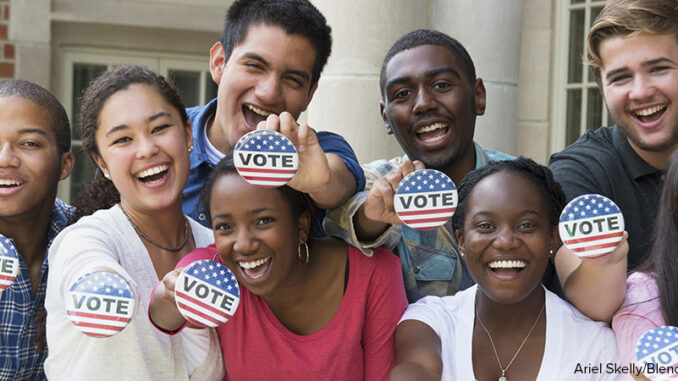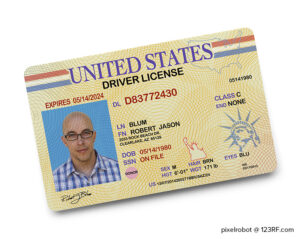
Census Controversy Continues?
You may have heard that the 2020 census is coming up. The census–an official count of every person living in the United States–is very important because the government uses that information to determine funding and programs for different communities. Census data is also used to draw voting districts. As you also may have heard, the Trump administration wanted to add a question about citizenship to the 2020 census. The new question would have read: “Is this person a Citizen of the United States?” But many experts were concerned about the question because they feared it could deter noncitizen residents from responding to the census. (A study done in 2018 found that asking this question would significantly limit the number of households willing to fill out the census.)
In response, earlier this month, the Supreme Court ruled that the administration wasn’t allowed to ask this question on the census. And so the Census Bureau began printing the census forms without it. However, Trump then tweeted that the news stating that the citizenship question would be removed was “fake,” and that the census would proceed with the question intact. Finally, last Thursday, he agreed to back away from pushing the issue. Instead of including the citizenship question on the census, he said that the government should gather citizenship data from already-existing federal records.
The census battle isn’t over yet, however. In Congress, the House Oversight and Reform Committee is conducting an investigation as to why the Trump administration even wanted the question to appear on the census in the first place. Congressional Democrats are concerned about what they see as a waste of time and resources over a question based on discrimination.
Dig Deeper What part of the Constitution requires the federal government to conduct a census? Based on what the Constitution says, do you think the Trump administration has a right to ask people about their citizenship status on the census? Why or why not?
From Drivers License Photo to Mug Shot?
Imagine that the government kept an image of your face on file, even if you’d never committed any kind of crime. Turns out, that’s not the plot of a science fiction movie . . . it’s a reality. Here in the United States, the faces of over half of all American adults are already kept in law enforcement databases, regardless of whether or not they’ve ever actually done anything wrong. How is the government obtaining this information? By scanning driver’s license photos without the owner’s permission.

Technically, there’s no law right now preventing the government from doing this, though a few U.S. states and cities are trying to ban the technology. But the problem is that this information is then used for a multitude of purposes, including by ICE and the FBI to identify potentially undocumented immigrants. In fact, since 2011, the FBI has conducted more than 390,000 facial recognition searches of national and state databases. Even worse, facial recognition technology is still very flawed–particularly when it comes to identifying women and people of color–and many law enforcement officers aren’t properly trained on it. This means that it would be very possible for ICE to identify someone as being in the U.S. illegally when actually that person is fully documented and completely innocent.
Many lawmakers, both Republicans and Democrats, are concerned that these database searches violate our civil rights, and that the practice is largely unregulated. But supporters say that the risks to our personal freedoms are worth it, because the information can be used to identify criminals and even missing children.
What Do You Think? Would you be comfortable with your face appearing in a national law enforcement database? Why or why not?
Smithsonian Considers Artwork by Detained Children
As the appalling conditions in immigrant detention centers along the U.S. southern border continue to make headlines, the Smithsonian National Museum of American History in Washington, D.C. is thinking about creating an exhibit showcasing some of the art made by the detained children.
The drawings–which show sad-faced children in cages–were made by migrant children who have recently been released from Customs and Border Control custody. They are currently being housed at the Catholic Charities Humanitarian Respite Center in McAllen, Texas. At the Respite Center, families can get a shower, hot food, and clean clothes–often for the first time since arriving in the United States. The children, all between 10 and 11 years old, were given canvases and asked to create drawings of their experiences while separated from their parents at the detention centers.
Some critics have complained that it’s inappropriate for the Smithsonian to take a political position. But spokespersons for the museum are quick to point out that its role is to tell the story of the United States, both the good and the bad, with the hope of creating a better future. The drawings are a part of the long and complicated history the U.S. has of dealing with immigration, and in the future, they will become important historical documents.
Meanwhile, as public outcry over the treatment of detained children at the border continues to grow, President Trump has denied responsibility. He has blamed Democrats for the current immigration crisis and suggesting that migrants who don’t like the conditions at the border should simply not come to the U.S. in the first place.
What Do You Think? In your opinion, should the Smithsonian include the children’s artwork in their collection? Why or why not?
Thank U, Vote
Today in the United States, about 51 million eligible Americans are still not registered to vote. And the age group with the poorest voter turnout has always been young people. But what if teenagers and young adults were as passionate about voting as they are about music? Some musicians–such as Taylor Swift, Jay-Z, and Ke$ha–have taken advantage of this idea by using their popularity to encourage their fans to register to vote at their concerts. Most recently, Ariana Grande’s Sweetener World Tour has broken all records for the number of voters registered during a concert tour. Though exact numbers are secret, since the tour kicked off in March, it has registered twice as many voters as any other tour in the past three years.
Here’s how the process works. Anyone attending one of Ari’s 51 North American shows can stop by a special booth at the show to sign up to register to vote. After they do so, they receive a special sticker with the “Thank U, Next Gen” movement logo on it. Can’t make it to the concert? No problem: you can still text “Ariana” to 40649 to register and receive your sticker. To make this possible, Ari partnered with HeadCount, a nonprofit organization that works with musicians to promote voter registration. The artist has said that she began the #thankunextgen movement to help let young peoples’ voices be heard. And it’s working: so far in 2019 alone, HeadCount’s concert partnerships have led to more than 17,000 new voter registrations.
